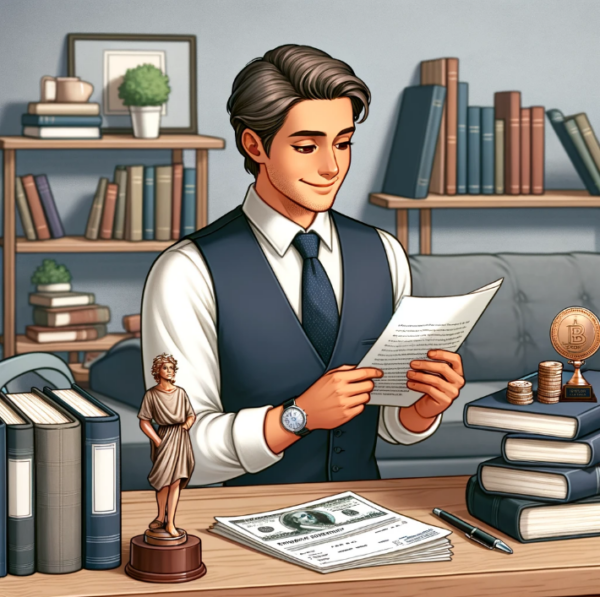
In the rapidly evolving world of books, the decision of how to publish is as crucial as the content itself. Authors today face a fundamental choice between two primary paths: self-publishing and the traditional publishing route. Each route offers distinct advantages and challenges, reflecting the diverse aspirations and needs of writers. Traditional publishing involves partnering with established publishing houses that manage the editing, production, distribution, and marketing of books. This route has long been revered for its professional touch and market reach.
In contrast, self-publishing allows authors to take full control of the creative and selling processes, often leveraging online platforms to directly reach readers without the intermediary of a publishing company. This method has gained significant traction in the digital age, democratizing the publication process and offering a viable alternative to the conventional system. As we delve deeper into these options, it’s essential to understand not just the logistical differences, but also how they align with an author’s goals for creative freedom, financial gain, and personal satisfaction in their publishing journey.
Your Publishing Journey Awaits – Start NowUnderstanding the Publishing Options
Traditional Publishing Defined
Traditional publishing represents the classic route in which an author partners with a publishing house to bring a book to market. This process begins with the author submitting a manuscript or proposal, usually through a literary agent who acts as an intermediary. Once a manuscript is accepted, the publishing house takes over the responsibilities of editing, designing, and marketing the book. The publisher also handles distribution, placing the book in various retail outlets and online platforms. Authors receive royalties based on sales, but they often start with an advance against these royalties.
The Process of Self-Publishing
Self-publishing places the responsibility of the publication process squarely on the author’s shoulders. This method allows writers to publish their work without the need for a traditional publisher. Authors use platforms like Amazon’s Kindle Direct Publishing, Smashwords, or Lulu to upload their books, which are then made available for sale in digital or print formats. The author manages all aspects of the process, from editing and cover design to marketing and distribution. Financially, the self-publisher or author bears the upfront costs but retains a higher percentage of the profits compared to traditional publishing.
Hybrid Publishing
Hybrid publishing is a blend of traditional and self-publishing. In this model, authors may pay for some services like editing and design but gain additional support in marketing and distribution. Hybrid publishers offer a middle ground, providing more support than self-publishing alone while offering greater creative freedom and potential profitability than traditional routes. This option can be ideal for authors who are willing to invest in their book’s potential but desire professional assistance not typically available to self-published authors.
Understanding these options allows authors to make more informed decisions based on their personal goals, financial capabilities, and the level of control they wish to maintain over their publishing journey.
Pros of Traditional Publishing
Access to Professional Editing, Design, and Marketing
One of the most compelling advantages of traditional publishing is the access it provides to a team of experienced professionals. Once a book is accepted by a publisher, it undergoes a rigorous editing process. This ensures that both content and language meet high standards, often enhancing the readability and overall quality of the work. Furthermore, publishers employ skilled designers who specialize in book aesthetics, from typography to cover design, crafting a visually appealing product.
Marketing is another critical area where traditional publishers excel. They have established channels and experienced teams dedicated to book promotions, which include arranging book tours, securing media appearances, independent publisher book awards, and facilitating reviews in prominent publications. These efforts are crucial in building anticipation and demand before a book’s release.
Credibility and Prestige Associated with Established Publishers
Publishing with a renowned publishing house brings a level of prestige that is difficult to achieve through self-publishing. Books released by major publishers are often perceived as vetted and of high quality, which can be a significant advantage in attracting readers. This credibility extends into the literary community, often increasing an author’s chances of winning awards and participating in exclusive literary events. For many authors, the acknowledgment by an established publisher serves as a validation of their work’s worth, which can be instrumental in building a literary career.
Distribution Networks and Retail Presence
Traditional publishers have well-established distribution networks that ensure wide availability of their titles. These networks include not only major bookstore chains and independent bookstores but also libraries and international markets. Traditional publishers often can distribute books in multiple formats, including hardcover, paperback, and e-books, across a diverse array of retail platforms.
Furthermore, traditional publishers have relationships with major retailers that can be nearly impossible for self-published authors to access on their own. These relationships ensure that books from traditional publishers are prominently displayed and more likely to be featured in-store promotions and recommendations. The retail presence supported by traditional publishers can significantly enhance a book’s visibility and sales potential.
The combination of professional services, credibility, and extensive distribution options makes traditional publishing a desirable choice for many authors. While the path to being published traditionally can be competitive and challenging, the benefits it offers in terms of professional handling, market reach, and author prestige are substantial. For authors seeking to focus primarily on their writing while leaving the logistical and promotional aspects to experienced publishing professionals, traditional publishing remains an attractive option.
Your Publishing Journey Awaits – Start NowCons of Traditional Publishing
Challenges in Securing a Book Deal
The journey to a traditional book deal is notoriously competitive and can be daunting for many authors. Aspiring writers must first capture the interest of a literary agent, a process that itself can be exhaustive and discouraging. Agents receive thousands of manuscript submissions each year, and only a small percentage catch their attention enough to warrant representation. Once an agent is secured, the manuscript must then be pitched to publishers, where it faces another round of scrutiny.
The criteria for selection can be stringent, focusing not only on the quality and appeal of the manuscript but also on market trends and potential sales. This highly selective process means that many authors may face repeated rejections or never find a really good literary agent or publisher willing to take a chance on their work.
Limited Creative Control and Lengthy Publishing Timelines
Once a book is accepted by a traditional publisher, authors often find that they have to cede significant control over many aspects of the book’s final appearance and marketing. Publishers typically handle editing, cover design, and the marketing approach, and while they possess expertise, their vision may not always align with that of the author. This can lead to conflicts over cover art, book titles, and even substantial edits to the text, which can be frustrating for authors who have a specific aesthetic or message in mind.
Moreover, the traditional publishing process is generally slow, often taking anywhere from one to three years from acceptance to publication. This timeline can be a significant disadvantage in a market where trends can shift quickly. The prolonged process to publish traditionally can delay an author’s ability to work on or release new work and may cause them to miss out on topical opportunities that could have boosted their book’s relevance and sales.
Smaller Royalties Compared to Self-Publishing
Financially, traditional publishing offers smaller royalty rates than self-publishing. Typically, authors can expect to earn between 10% to 15% royalties on hardcovers and somewhat less on paperbacks and ebooks from traditional publishers. These rates stand in stark contrast to self-publishing platforms where authors can earn up to 70% royalties on ebooks and a significant percentage on print books after deducting the costs of printing.
Additionally, most traditional publishers offer an advance against royalties, which means authors receive an upfront sum when they sign a contract. However, this advance must be “earned out” through book sales before any additional royalties are paid, which is not guaranteed if the book does not perform well in the market. This system can result in a lower overall income from a book than if it were self-published, where authors earn from the first sale and continue earning as long as the book sells.
These drawbacks highlight why some authors are turning towards self-publishing or looking for more flexible publishing arrangements that can offer a better balance between professional support and personal control. Traditional publishing, while prestigious, is not without its significant challenges, making it essential for authors to carefully consider their priorities and options before committing to this route.
Pros of Self-Publishing
Complete Creative Control Over Content and Book Design
One of the most attractive aspects of self-publishing is the level of control it offers authors over every element of their book. Unlike traditional publishing, where decisions about the final output are often compromised or entirely made by the publishing house, self-publishing gives authors autonomy over the content, layout, and cover design. This freedom is particularly beneficial for writers with a clear vision for their work or those who wish to write without concern for the commercial preferences of traditional publishers. Authors can experiment with unconventional formats, niche topics, or personal storytelling techniques that might not be deemed commercially viable by a traditional publishing house’s standards.
Self-publishing also allows authors to choose their editors and cover designers or even undertake these tasks themselves, which can be crucial for maintaining the integrity and authenticity of their vision. This can result in a product that feels uniquely personal and true to the author’s original intent, potentially resonating more deeply with its intended audience.
Higher Royalties and Potential for Quick Earnings
Financially, self-publishing can be more lucrative per each book published and sold than traditional publishing. Without the intermediary of a publishing house, authors can retain a substantial portion of their earnings, often receiving 60% to 70% of the sale price as royalties when selling digital books, and a similarly high percentage from print-on-demand services minus the printing costs. This is a stark contrast to the typical 10% to 15% royalty rate offered by traditional publishers.
Moreover, the direct sales model of self-publishing allows authors to receive their earnings much faster. In traditional publishing, royalties are paid infrequently—often bi-annually—and only after any advances have been earned out. In self-publishing, platforms typically pay monthly, which can help maintain a steady income stream, crucial for full-time writers.
Speed to Market: Authors Can Publish Quickly and On Their Own Schedule
In the fast-paced world of publishing, speed to market can be a decisive advantage. Self-publishing excels in this area by allowing authors to move from manuscript to market in a fraction of the time it takes a traditional publishing process. While traditional publishing can take anywhere from 18 months to three years from acceptance to bookshelf, self-published authors can release a book as soon as they feel it’s ready, often within a few months or even weeks.
This rapid publishing process is invaluable for books tied to timely events or trending topics where being first or early to market can capture fleeting public interest. It also allows authors to be more responsive to their readers, adapting quickly to feedback and releasing sequels or related titles without the typical delays associated with traditional publishing cycles.
Conclusion
The benefits of self-publishing—creative control, higher royalties, and speed to market—present a compelling case for authors considering this route. By bypassing the traditional gatekeepers, authors can bring their visions to life on their terms and potentially reap greater financial rewards. While self-publishing requires significant effort in terms of self-promotion and managing production details, the autonomy and potential returns it offers make it an increasingly popular choice among new and established writers alike.
Spines Publishing Platform
Spines is an innovative self-publishing platform that simplifies the transition from manuscript to published book in under 30 days, offering speed and efficiency unmatched in the industry. The service is highly affordable due to its AI-driven production process, making it a cost-effective option compared to traditional publishing costs. Authors receive dedicated support from a personal production manager and benefit from a user-friendly dashboard that includes services like proofreading, editing, and cover design.
Spines supports all formats including print-on-demand, eBooks, and audiobooks, ensuring authors reach a wide audience through global distribution in over 100 channels, including Amazon and Barnes & Noble. Open to all authors, Spines guarantees satisfaction with a 7-day money-back policy, making it a premier choice for both new and experienced writers looking for comprehensive, accessible publishing solutions. Sign up for free today!
Your Publishing Journey Awaits – Start NowCons of Self-Publishing
Lack of Access to Professional Editing, Design, and Marketing Unless Hired
Self-publishing offers immense freedom, but it also places the burden of quality and professionalism entirely on the author’s shoulders. Unlike traditional publishing, where a team of experienced editors, designers, and marketers ensure the book meets industry standards, self-published authors must either acquire these skills themselves or outsource them, which can be costly. Professional editing is crucial for ensuring grammatical accuracy, coherence, and overall readability, while skilled designers can make a book visually appealing and competitive in a crowded market. Similarly, effective marketing is essential for reaching potential readers through proper channels and compelling promotions.
The cost of hiring professionals can be prohibitively high for many authors, leading to a situation where those unable to afford these services might produce work that does not match traditionally published standards. This disparity can affect everything from the book’s reception to its sales, placing self-published authors at a significant disadvantage.
Difficulty in Distribution and Gaining Shelf Space in Bookstores
Another significant challenge facing self-published authors is distribution, particularly in brick-and-mortar bookstores. Traditional publishers have established relationships with booksellers and distributors, which they leverage to secure prominent placement for their titles, such as front-store displays and inclusion in special promotions. In contrast, self-published authors often find it difficult to negotiate space on bookstore shelves, as retailers tend to favor books from established publishers due to their proven sales record and return policies.
Furthermore, without the support of a traditional publisher, self-published authors must also handle the logistics of distribution themselves. This includes managing inventory, fulfilling orders, and possibly dealing with returns—an overwhelming and time-consuming set of responsibilities that can detract from writing and promotional efforts.
Challenge of Building Credibility and Competing with Traditionally Published Books
Self-published authors frequently encounter skepticism regarding the quality and credibility of their work. Traditionally published books benefit from the perceived endorsement of the publishing house, which acts as a filter ensuring a certain level of quality before a book reaches the market. Without this implicit validation, self-published authors must work harder to prove their work’s worth, often struggling to be taken seriously by critics, awards committees, and professional associations.
Competing with traditionally published books also means contending with their more substantial marketing budgets and broader media reach. Traditional publishers can secure reviews in major publications, arrange author interviews, and enter books into prestigious competitions, all of which can significantly enhance a book’s profile. In contrast, self-published authors typically rely on grassroots marketing strategies, such as social media promotion, reader reviews, and word of mouth, which can be effective but rarely match the scope and impact of traditional marketing campaigns.
While self-publishing offers unparalleled control and potentially higher per-book profits, it also comes with significant challenges. The lack of professional support in editing, design, and marketing; difficulties in distribution; and the hurdle of establishing credibility are substantial obstacles. These challenges require self-published authors to invest considerable time, effort, and resources into managing aspects of the publishing process that go beyond writing, often making the path to success a steep one.
Financial Considerations
Comparison of Upfront Costs vs. Long-term Earnings in Both Routes
The financial landscape of publishing varies significantly between traditional and self-publishing paths. Traditional publishing typically involves minimal upfront costs for the author, as the publisher assumes the financial risk and invests in the editing, design, marketing, and distribution of the book. Authors often receive an advance against royalties, providing some immediate financial benefit without initial expenditure. However, the royalties from traditional publishing are generally lower, usually ranging from 10% to 15% on print books and slightly higher for ebooks.
Your Publishing Journey Awaits – Start NowIn contrast, self-publishing requires the author to bear the initial costs, which can include professional editing, cover design, formatting, and marketing. These costs can be substantial, potentially running into thousands of dollars depending on the services employed. Despite the higher initial investment, self-published authors enjoy much higher royalty rates, typically around 60% to 70% for ebooks sold on platforms like Amazon Kindle Direct Publishing, and a significant percentage from print-on-demand sales after printing costs. This higher royalty rate means that successful self-published books can be more profitable in the long run, provided they achieve good sales volumes.
Selling your book effectively is crucial to recouping your investment and turning a profit. Self-published authors should leverage multiple sales channels to maximize reach, including online platforms like Amazon, Barnes & Noble, and Apple Books, as well as direct sales through their own websites. Utilizing social media, author websites, and email marketing can help build a dedicated readership and drive sales. Authors should also consider attending book fairs, literary events, and virtual book launches to increase visibility. Additionally, seeking reviews from reputable sources and engaging with book bloggers can enhance credibility and attract more readers, boosting overall sales potential.
Case Studies of Successful Authors in Both Arenas
Successful authors from both traditional and self-publishing realms offer insights into the financial potentials of each path. J.K. Rowling, a traditionally published author, became one of the wealthiest writers in the world through her Harry Potter series, benefiting from the extensive reach and marketing prowess of her publishers. On the other hand, E.L. James, initially a self-published author with her Fifty Shades series, leveraged the high royalty rates and control of self-publishing to build a publishing phenomenon, later transitioning to traditional publishing due to the series’ massive success.
Hugh Howey, another successful self-published author of the Wool series, retained his ebook rights by self-publishing while negotiating print-only deals with traditional publishers, combining the benefits of both approaches to maximize his financial gains.
Analysis of Sales Trends for Self-Published vs. Traditionally Published Books
Sales trends indicate that while traditionally published books generally have higher average sales due to better distribution channels and marketing support, a significant number of self-published titles have also achieved considerable success, particularly in genres like romance, fantasy, and science fiction. Data from platforms like Amazon show that self-published books can sometimes dominate categories, particularly ebooks, where ease of access and pricing flexibility make them more appealing to consumers.
However, the vast majority of self-published books sell fewer than 100 copies, while traditionally published books are more likely to reach wider audiences through physical retail and library placements. The financial success of either route depends significantly on the genre, marketing efforts, and the existing platform of the author.
Ultimately, the choice between traditional and self-publishing should consider not just potential earnings but also personal goals, the desire for creative control, and willingness to engage in marketing and promotion, all of which play critical roles in an author’s financial success.
The Role of Agents and Publishers
The Importance of Literary Agents in Traditional Publishing
In traditional publishing, literary agents are vital intermediaries between authors and publishers. Their role extends beyond merely securing a publisher; they advocate for the author’s best interests, negotiate contracts, and often guide career development. A good agent has a deep understanding of the market, knows what different publishers are looking for, and maintains relationships that can get a manuscript in front of the right people. They understand contract nuances that can significantly impact an author’s earnings and rights, such as advances, royalties, rights to other media, and territorial sales.
Agents also provide editorial guidance before submission to ensure the manuscript is as strong as it can be, thereby increasing the likelihood of a sale. They are particularly crucial for new authors who might not yet understand the complexities of the publishing industry. By vetting and selecting manuscripts they believe in, agents also lend an additional layer of credibility to an author’s work, which can be essential in standing out in a crowded market.
Self-Publishing Platforms and Services That Act as Pseudo-Publishers
For authors choosing the self-publishing route, numerous platforms and services can act as pseudo-publishers, offering various degrees of support traditionally provided by publishing houses. These platforms allow authors to bypass traditional gatekeepers, giving them unprecedented access to the publishing world.
Platforms like Amazon’s Kindle Direct Publishing (KDP) and Smashwords provide tools for digital publishing and distribution, covering a vast network that includes major ebook retailers and libraries. They offer relatively straightforward processes for uploading and formatting books, setting prices, and managing sales—all without upfront costs typically associated with a traditional publishing deal.
In addition to publishing and distribution, there are services such as Reedsy or IngramSpark that offer access to professional editing, design, and marketing services, which self-published authors can utilize to enhance the quality of their books. These services are generally paid, but they are crucial for authors who wish to compete with traditionally published books in terms of quality and professionalism.
Moreover, platforms like Draft2Digital and BookBaby offer comprehensive packages that include not only publishing and distribution but also promotional tools and sometimes even print options. These services can be especially valuable for authors who wish to reach audiences across multiple formats without managing multiple vendors.
These self-publishing services collectively form a new ecosystem in the publishing world, one that empowers authors with more control and potentially higher returns. However, they also require authors to be more involved in the publishing process, often necessitating a steep learning curve and a significant time investment in managing the publication and marketing of their books.
In conclusion, whether navigating the traditional route with the aid of a literary agent or managing self-publishing through various platforms, authors today have multiple paths available. Each path requires different levels of involvement and offers different benefits, and the choice largely depends on the individual author’s goals, skills, and resources.
Your Publishing Journey Awaits – Start NowWho Should Consider Self-Publishing?
Self-publishing presents a viable option for various types of authors, each with unique motivations and circumstances that make the autonomy of self-publishing particularly appealing.
Authors Targeting a Narrow Niche or Possessing a Strong Personal Platform
For authors whose work appeals to a specific, perhaps smaller audience, self-publishing can be an excellent way to reach readers directly without the need for mainstream appeal that traditional publishers often require. These might include books on specialized topics, such as niche hobbies, certain aspects of history, or localized narratives that may not have broad market appeal for major publishers but have a dedicated and engaged audience.
Additionally, authors who have built a robust personal platform—such as a significant social media following, a popular blog, or a strong speaker circuit presence—might find self-publishing more beneficial. With an established audience, these authors already have potential readers at their fingertips, making it easier to market and sell their books directly without the need for traditional marketing channels.
Writers Desiring Full Control of the Publishing Process and Timeline
Authors who prefer to maintain complete control over every aspect of their book—from writing and editing to cover design and marketing—may opt for self-publishing. This route allows them to make all decisions regarding how their book is presented and distributed, adhering closely to their vision without compromise.
Cases Where Traditional Routes Have Been Exhausted or Are Impractical
For some writers, traditional publishing pathways may not be a viable option. This could be due to repeated rejections from publishers or simply because the time-intensive nature of traditional publishing does not align with their goals or timelines. Self-publishing can offer a faster, more direct route to publication, especially for authors eager to publish timely content or those looking to maintain momentum in a series of books.
In these scenarios, self-publishing not only provides a practical alternative but also empowers authors to take initiative and drive their publishing success, making it an appealing choice for those willing to navigate the challenges and seize the opportunities it offers.
Conclusion
Throughout this exploration of the publishing landscape, we’ve contrasted the distinct pathways of traditional and self-publishing, each offering unique advantages and challenges. Traditional publishing provides professional editing, design, and marketing support, along with the credibility and extensive distribution networks of established publishers. However, it comes with its drawbacks, such as limited creative control, smaller royalties, and the challenging process of securing a book and publishing deal itself.
On the other hand, self-publishing empowers authors with complete creative control and potentially higher royalties, along with the flexibility to publish on their timelines. Yet, it requires significant personal investment in terms of time and money to cover professional services and distribution efforts, and it lacks the inherent credibility of traditional publishers.
The decision to choose between these paths should hinge on an author’s personal goals, resources, and the level of control they desire over the publishing process. Those with a specific vision for their work, or those writing for a niche audience, might find self-publishing more rewarding. Conversely, those seeking the prestige and support of traditional publishing may prefer to navigate its competitive landscape.
Authors are encouraged to carefully consider their personal circumstances and career aspirations when making this crucial decision. Ultimately, understanding one’s priorities and what each publishing route entails will guide authors toward the best choice for their work and their professional growth.
Your Publishing Journey Awaits – Start Now






